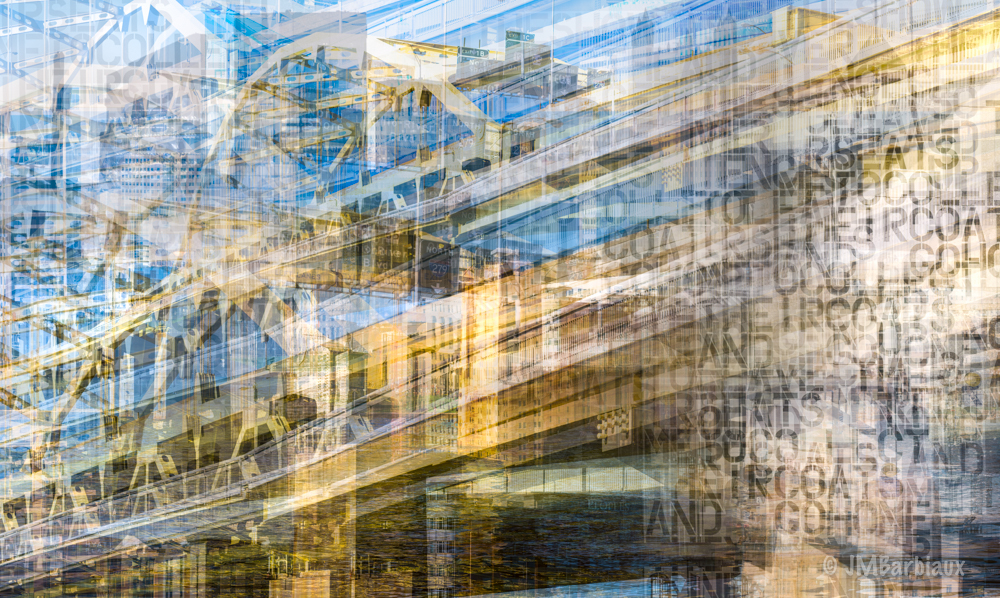If you’ve been on Instagram, Flickr, or 500px lately you’ll notice that the most popular photographs look very similar (with exceptions of course). Add a bit of fade, some lens flare, deep shadows, etc… It’s really easy to get swept into the popular style of photography. I mean who doesn’t like lots of likes on social media? But what does your photography say? Do you take meaningful photographs or are you just trying to reinvent the wheel?
The reason I love street photography is because no two shots are ever the same. The same person will never be in the exact same spot, doing the same thing, at the same time of the day. After picking up street photography and becoming proficient in that genre I began to notice that I was attracted to similar situations, light, and subjects. I began to discover my style. This style began to bleed into my landscape photography, fine art photography, marketing photography, etc.. My photography has began to act as a fingerprint, images you could look at and say “that’s by John Barbiaux” without seeing a watermark.
How Do You Find Your Style?
The best advice I could give anyone trying to develop their own individual style is to emulate others at first, especially if you’re newer to photography or a style of photography like street. That may seem counter-intuitive but learning other styles is the best way to “culture” yourself in photography. Have you ever heard the saying “you don’t know what you don’t know”? Learning other styles and taking cues from each type of style you like and combining them into a style of your own can be a great way to create a new style all together… Something others may emulate in an attempt to come up with their own style.
Consume
Simply put, appreciate other photographers work. Hopping onto the nearest social media photo sharing site and perusing other people’s photography can only help you. You should have a few sites or photographers that you follow in order to draw inspiration from on a daily basis, and I do mean daily. You should be studying photography every single day, even if it’s a single image.

Some of the most influential work I have studied has been done by painters not photographers, it’s important to study all mediums (even music) to draw inspiration. Monet and many other impressionistic painters (as well as photographers) influenced my Fractal Composite work (below).

Studying photography isn’t simply flipping through a magazine or scrolling down a webpage. Read a photograph much like you’d read a textbook in school (can you remember that far back?). Think about what it was that first grabbed your attention in images you like… Where did your eyes go? Why? What composition elements were used? Was it the subject or the way the subject was photographed that grabbed your attention (or both)? What colors were used and how did they work together? What can you pull from that particular style to implement in your own photography.
Challenge Yourself
Studying other photographers and attempting to emulate their style can be incredibly difficult. It can cause you to get out of your comfort zone and try things you’d never attempt on your own. I’ve said it before and I’ll say it again, the best things in life often happen to us when we are outside of our comfort zone. Challenge yourself to perfect other styles, only then can you successfully take parts of them to implement into your own style.
Emulate Don’t Replicate
To emulate something means that you strive to equal or excel something. Replicate means to simply duplicate, copy, or repeat something. Developing your own style means you avoid falling into the trend where everyone replicates the most popular images out there. Take the example above for instance… Though Monet has had a huge influence on my photography, my style looks quite different. Some of his work has a perspective where it feels like the viewer is inside the frame with the subjects and I’ve tried to implement this in other genres of my photography as well.
Now Take Action
Now, take what you learned and actually apply it to a series of photographs. This is the most important part of studying others art in an attempt to develop your own style. If you aren’t going to attempt other styles you take the time to learn about how will you ever know if part of their style would improve your own photography? I challenge you to spend a week studying a single artist and then a month emulating their style. I guarantee you will grow as a photographer and move closer to developing your own style.





I agree with everything you say, though I reckon I’ll be 100 years old by the time I’ve found a style and personalised it to make it unique. ( I am a purely recreational photographer and at the age when I am pleased with the way I’ve processed an image I have forgotten what I did! ) it’s a good idea to note down stages in Photoshop.
Haha, yes I’m sure that your style has evolved over the years. I think it’s important to find our style but also equally important to continue to improve on it. I’ve found that the more art I consume the more my own changes. I’ve also found the opposite to be true… If I only look at my own images for a while I tend to feel like I’ve gotten stuck in a rut. Thanks for reading and sharing Helen, have a great day!
Great article, John. I keep looking for that style for myself — have yet to find it but am encouraged by this article. Thank you.
I don’t know Becky, your photography looks amazing and improves all the time… Keep doing whatever you’re doing!